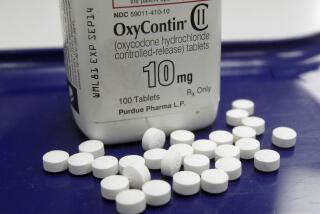It Could Have Been Worse
- Share via
Bad as it is, the compromise between the White House and Congress on a plan to recover from the nation’s savings and loan disaster could be worse. The plan will add hundreds of millions of dollars to the cost of cleaning up the savings mess for no better reason than President Bush’s insistence on keeping the full cost of repairing the damage from appearing in the federal budget.
But Bush’s threat to veto a House-approved plan to put the the full cost of the bailout in the budget could have meant no agreement at all before the summer recess. That would have left members at the mercy of lobbyists for saving institutions who still are holding out for softer operating rules while the institutions repair the damage done by years of sloppy loan practices, simple greed and lax federal inspections. Soft rules got them into trouble in the first place and lobbyists would have had a full month to work on members in home districts.
Except for the decision to keep most of the cost of the rescue operation off-budget, the heart of the legislation remains remarkably solid, considering the bludgeoning it took from the savings lobby.
Under the agreement finally approved, the federal government will sell $50 billion worth of bonds and use some of the money to close bankrupt S&Ls; that are now losing as much as $20 million a day and the rest to make good on deposit insurance up to $100,000 on each account.
Counting interest on the bonds, the ultimate cost of the bailout could be as high as $300 billion, with taxpayers liable for 75% of the total. Banks and savings institutions would pay the rest through higher deposit insurance premiums.
Adding the debt to the federal budget rather than issuing the loans through an off-budget agency would make it possible to issue U.S. Treasury bonds that could be sold at interest rates so much lower that costs over the next few years would be cut by $4.5 billion, an enormous amount.
Still, the tough elements of the plan that are intended to restore sound lending practices to the industry remain intact. Savings institutions will be required to raise to 3% the percentage of their assets held as capital available to pay to depositors. They will be required to spend more time dealing in home mortgages, the original purpose of most such savings banks, and less in lucrative but risky junk bonds and speculative commercial real estate deals.
Penalties for fraud will be stiffer, and the Justice Department will get $75 million a year to investigate suspected fraud cases. The Federal Home Loan Bank Board, which was supposed to monitor thrift practices, will be dismantled and its duties divided between the Federal Deposit Insurance Corp., which inspects banks, and the Treasury Department. There never was a prospect for a happy ending in the savings and loan disaster that spread without a murmur from federal institutions that were created to practice damage control in such situations. There was only a prospect that it could get worse. That seems to have been avoided.
More to Read
Get the L.A. Times Politics newsletter
Deeply reported insights into legislation, politics and policy from Sacramento, Washington and beyond. In your inbox twice per week.
You may occasionally receive promotional content from the Los Angeles Times.










